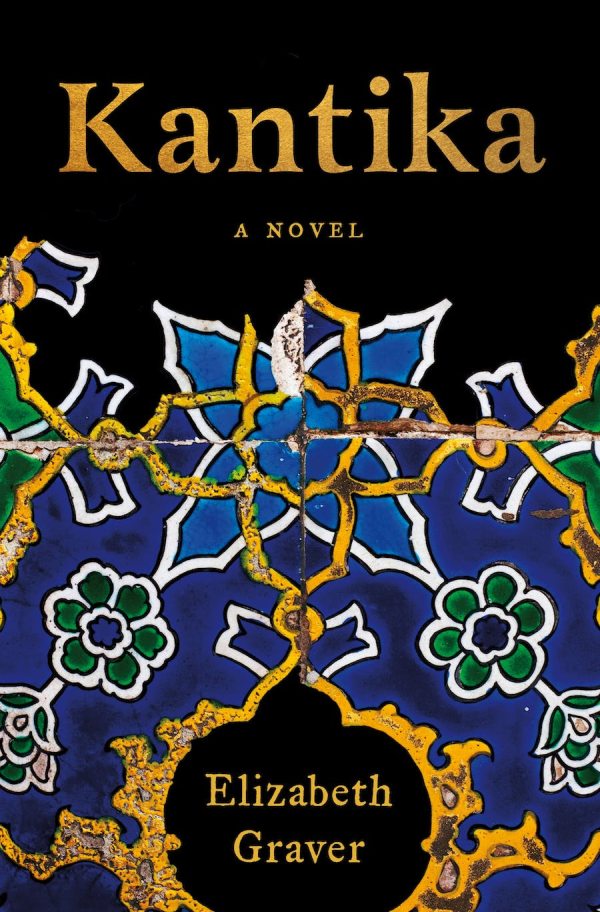Elizabeth Graver
KANTIKA: A NOVEL
New York: Henry Holt and Co., Metropolitan Books, 2023: ISBN: 978-1-250-86984-5
Reviewed by Beth Dwoskin1
Many of us wish we had interviewed our immigrant forebears. What a privilege to have documentation of your ancestral past! In Kantika, Elizabeth Graver exercised that extraordinary privilege: she wrote a fictionalized biography of her maternal grandmother, using interviews of her grandparents that she conducted in 1985, along with subsequent interviews of great-aunts and uncles, research trips, and documentary evidence. Graver had so much material and so much familial support that she was able to use real family names for her characters, and each chapter begins with a photo from her real family.
Kantika begins with Rebecca’s early years as the child of well-off Sephardic parents in Ottoman Istanbul, surrounded by Greeks, Armenians, Muslims, and Jews. Like most Sephardic Jews in Muslim lands, French becomes Rebecca’s lingua franca, but not because she attends an Alliance Israélite Universelle school. Instead, she goes to Catholic school where she is taught by nuns and surrounded by Christian imagery. But Rebecca and everyone in her family retain their Jewish identity wherever they live.
Alberto, Rebecca’s father, plays a big role in the Old World part of Kantika. In addition to his mysterious first wife, who lives in the neighborhood and is supported by him, Alberto himself is a complex character, doomed to the mercantile existence that was common among wealthier Jews though he would rather spend time leading prayers in his synagogue and working in his garden. In a rather hazy sequence of events, Alberto neglects his business even as the First World War precipitates the collapse of the Ottoman Empire.
Graver does not dwell on the years of trouble for Turkish Jews. The reader has to surmise that the rise of secular Turkish nationalism may contribute to their discomfort. What happens next is one of the more opaque elements of the story. Through the offices of a refugee organization, Alberto receives an offer to become the shammas of a synagogue in Barcelona. The reader is left wondering why suddenly in the twentieth century Sephardim were allowed to return to Spain and take Spanish citizenship (an offer that never pans out). Rebecca’s family finds few other Sephardim in Barcelona and only a small number of Ashkenazim. Was their invitation to Spain a momentary aberration, lost to history? The family fled Turkey in part to protect Rebecca’s teenaged brothers from conscription. How did they avoid involvement in Spain’s Civil War?
Rather than explore these questions, the story dwells on the family’s bleak, lonely existence as a tiny Jewish minority in hostile, Catholic Barcelona. In perhaps the strongest section of the book, we see Alberto unravel, becoming old and defeated, while Rebecca and her mother Sultana take the reins of family leadership. Graver explores the uniquely Jewish experience of multilingualism as Rebecca’s family comes to Spain speaking French and Ladino, or Spanyol, as they called it. In Barcelona, they struggle to speak Catalan. Unlike in Turkey, they hide their Jewishness, becoming twentieth century crypto-Jews in Spain.
In this period, Rebecca establishes herself as a seamstress, marries a Turkish Jew, has two children, and then goes to search for her missing husband in Turkey, only to learn that he is dead. With Europe facing a grim future, Rebecca goes to Cuba to meet Sam, a potential second husband. In short order, they marry and move to Sam’s home in Queens. Her two sons remain in Barcelona.
With this move the book ruptures, just as immigration ruptured Rebecca’s life. Her story moves to America. Though her two sons in Spain manage to join her eventually, the story doesn’t dwell on the bureaucratic nightmares she must have had to arrange for their passage to America and how their absence must have weighed on her heart. The rest of her family is mentioned only in their correspondence from Spain. We learn that one of her brothers is severely beaten by a fascist mob and how she mourns the deaths of her parents. In general, there is little information about how her brothers and her sister live as Jews in fascist Spain during the Second World War.
Sam’s daughter Luna, who has cerebral palsy, becomes a major character; the book dwells at length on her life and on her relationship with Rebecca. As Rebecca tries to learn English and manages the growing household, Luna is part of the interplay between Rebecca and Sam’s relatives. When Rebecca’s elementary-aged sons finally arrive in Queens, the mixed-family drama takes center stage. The story of her older son David, who survived an attack on the USS Franklin in the Pacific theater in 1945, fills a small section of the ongoing story. It seems clear that Rebecca’s American narrative is built around Graver’s interviews of English-speaking family members.
However it may be marketed, Kantika is not a historical novel. There’s no narrative arc, no rising and falling action, no exclusive point of view, no historical events in the foreground of the action. Rather, Kantika is an immigration narrative, told mostly through the eyes of the main character, Rebecca, but with significant contributions from other family members. This is the familiar story of profound disconnect between the pre-war Old World, Turkey in this case, and post-war America with its relentless futurism and its blank slate past for an immigrant.
One thematic thread of the book, especially, her father Alberto’s love of gardening, which he passes on to Rebecca, is small but critical. A suitcase full of seedlings that Alberto carries from Istanbul to replant in Barcelona brings him out of the depths of his despair. Neither his life nor his seedlings can be transplanted in America but Rebecca gardens in her new home, replanting her entire family tradition. Her experiences are a microcosm of the twentieth century Sephardic experience.
1 Beth Dwoskin is a retired librarian with expertise in Yiddish literature, Jewish folksong, and Jewish history.
Copyright by Sephardic Horizons, all rights reserved. ISSN Number 2158-1800

